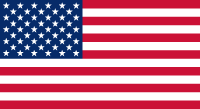
Unlike traditional shuffleboard, shuffleboard table rules don't include the use of curved sticks, and it doesn't involve opposing players standing at opposite ends of the playing field. Don't worry. If you're unfamiliar with shuffleboard rules or scoring, you will soon be!
Standard Table Shuffleboard Rules
If you want to keep up with the veterans of the game, you'll need to learn the standard shuffleboard table rules.
To get started, you'll need a shuffleboard table and four weights (also called pucks), two for each player (eight in total). The weights are colored to distinguish them — four red and four blue.
After flipping a coin to decide who goes first, you'll take turns sliding the weights down the table without them falling off the end. Different marked sections indicate how many points each player scores when their weight stops, with the weight at the farthest end of the board being worth the most points.
In table shuffleboard, players not only try to get their weights into the highest scoring zones possible but also attempt to prevent their opponents from scoring. To this end, players can also knock their opponents' weights off the board.
Shuffleboard Scoring Rules
A conventional table shuffleboard surface has three numbered sections marked off in ascending order away from the players. The numbers correspond to how many points a player receives when they land their weight in that section. If players push their weight off the table, they receive no points. Beyond section 3 is a drop-off.
Only the most distant weights in each section are worth points. For instance, if Player 1 gets a weight in section 2, but Player 2 gets their weight farther in the same unit, only Player 2 would be awarded points for the turn. Most shuffleboard scoring rulesets dictate that play continues until one player reaches 15 or 21 points.
Knock-Off Shuffleboard
In this classic twist on shuffleboard table rules, players throw from opposite ends of the board, aiming to get as close as possible to the foul line while also attempting to knock their opponent's weights off the table. The first team to reach 15 points in Knock-Off wins, though the game allows players to continue to 21 points if they choose to.
Crazy Eight
Crazy Eight is a variation of Knock-Off that allows each player to use all eight weights. Player 1 begins by throwing four weights of the same color. If they manage to keep them all on the board without passing the foul line, no points are scored, and it's Player 2's turn to throw from the opposite end of the board.
However, if Player 1 manages to get their first four weights across the foul line without going over the edge, they then get to throw the other four weights at the first set. Their goal is to knock off the weights of the first color while keeping at least one of the fresh weights on the table. Players should agree on a winning score beforehand (typically, 15 or 21), and the first to meet or exceed that number wins.
Horse Collar
The objective of Horse Collar is to be the first to reach 51 points. Single players or teams throw from opposite ends of the board. To be declared the winner using this shuffleboard scoring, the player or team that first arrives at 51 points must still have the final weight in their hand. This important weight is often referred to as "the hammer."
Tap and Draw
In Tap and Draw, players want to get their weights as close as possible to the end without going over. An important part of Tap and Draw rules is that if you knock your opponent's weight off the board, their weight gets placed back on the board, and your weight is removed. Players can choose to go to 51 points like Horse Collar or 15 points like Knock Off. A game of Tap and Draw won't end until the player who shot last has taken their turn, even if their opponent has already reached the high score.
Target
Instead of foul lines or other markings, Target uses a target to indicate scoring areas, similar to archery or darts. One player or team tries to slide their pucks into the target zone, and their opponent attempts to get theirs in the zone while also knocking the other team or player's pucks out.
- Weights that touch the outer target ring are worth one point
- Weights in the outer ring get two points, regardless of whether they're touching the intermediate ring or not
- Weights in the intermediate ring get three points
- Weights that touch the inner ring get four points
- Weights that land entirely in the inner ring gets five points.
Basic Tips and Tricks
- Hold the weight with your thumb on one side of the rim, your middle finger on the opposite side, and your index finger on top. Your ring and little fingers should remain in contact with the surface of the table.
- Use soft, measured throws and focus on control. You want to float your puck to the end of the table, not hurl it!
- Aim for pinpointed spots to give yourself a way to measure your progress. Make sure you practice throwing to different parts of the board.
Once you've learned the shuffleboard rules and developed a consistent throwing technique, it's time to dominate your opponents!







 Shop now. Pay over time with affirm
Shop now. Pay over time with affirm